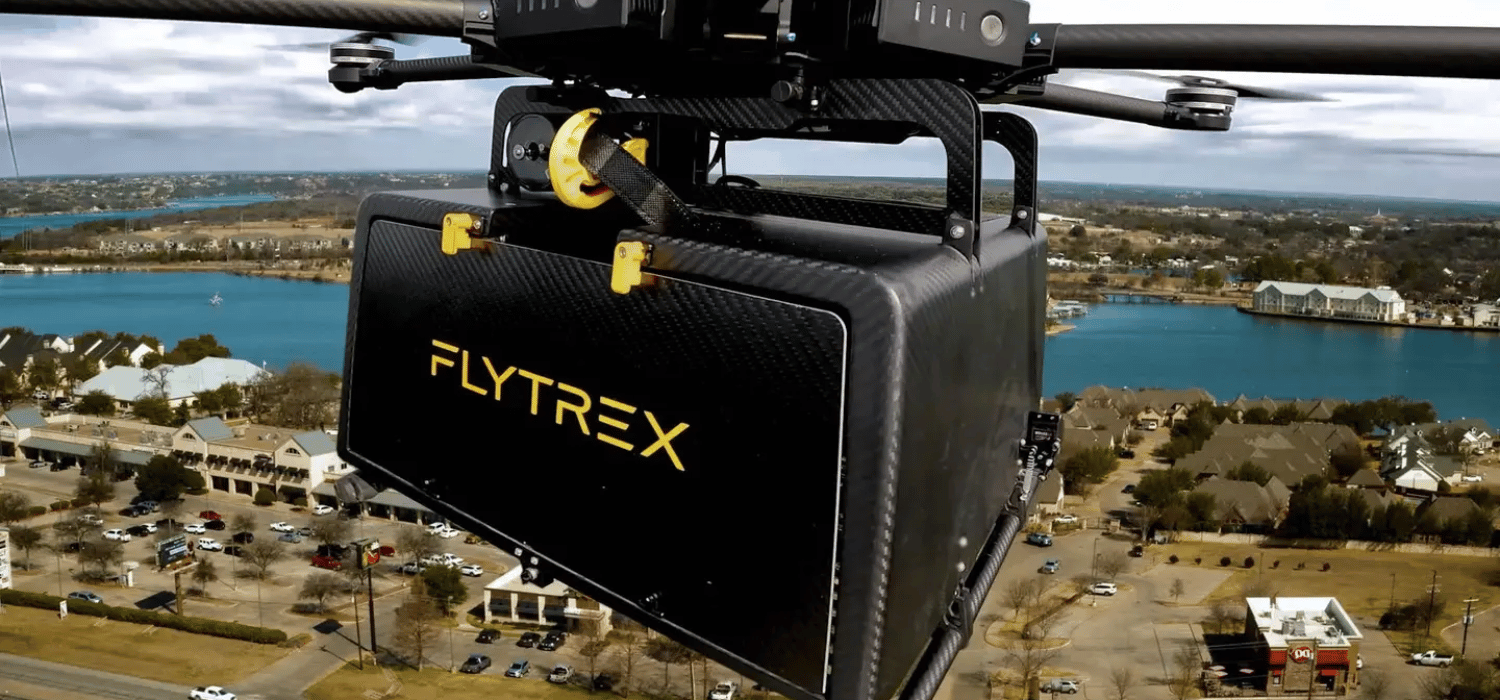
When DoorDash, Uber Eats, and Instacart exploded during the pandemic, most operators assumed the “app layer” was the endgame for convenience. Instead, we are entering a second act in which the physical infrastructure behind those slick apps is being re-engineered just as aggressively as the software. The next competitive advantage will come from merging a data-first delivery stack with automated carbon-light fulfillment, and early signs suggest drone logistics specialist Flytrex may be the quickest route there.
Labor Costs in On-Demand Delivery
In 2024, gig workers for services like Uber, Instacart, and DoorDash saw their earnings decline despite an increase in hours worked. Uber drivers’ weekly earnings fell by 3.4% to $513, while DoorDash saw a 4.8% rise in weekly earnings to $240.
Meanwhile, online food delivery in the United States carried an average “hidden cost” of $12.80 per order, made up of service fees, delivery fees, and tips.
Platforms like Uber Eats charge restaurants commission fees ranging from 20% to 30% per order, plus an average customer delivery fee of about $3.99. While Postmates has no upfront costs, they also charge up to 30% in commission fees, with delivery fees varying from $0.99 to $3.99.
Growth is Still Non-Negotiable
Consumers, on the other hand, refuse to give up the convenience premium. McKinsey pegs the global food-delivery market at $150 billion, more than triple its size in 2017. This exponential growth is a testament to the industry's potential, offering a promising future. Meanwhile, Statista expects the broader online food sector to surge from $1.22 trillion in 2024 to $1.92 trillion by 2029, a promising trajectory for the future.
A Tech Stack that Finally Lines Up Bits and Atoms
To close the profitability gap, operators are converging on a three‑part tech stack: first, dynamic demand‑forecasting models that blend POS, weather, event, and traffic feeds to predict order surges within 15 minutes; second, autonomous inventory orchestration via micro‑fulfillment centers whose vision systems and AMRs assemble meals with minimal shrink; and third, a hybrid‑fleet dispatch layer that decides in real time whether a car, e‑bike, sidewalk robot, or drone is the fastest and cheapest way to reach the customer.
Why Flytrex?
Flytrex has already turned drone delivery from a lab experiment into a turnkey service purpose‑built for restaurants and convenience chains. Over the past year, its roster of national partners has grown sevenfold, pushing the network past 150,000 completed flights.
In 2021, Flytrex received FAA approval to begin operating drone deliveries within a one-mile radius. Since then, the company has significantly expanded its capabilities. Today, Flytrex is operating on a much broader federal scale, delivering to tens of thousands of homes. Its advanced systems now allow a single operator to oversee and manage an entire fleet of drones, marking a major leap in scalable, autonomous delivery technology.
Moreover, Flytrex’s longtime partner, Causey Aviation Unmanned, was granted standard part 135 Air Carrier Certification in January 2023. This certification is the only path for small drones to carry the property of another for compensation beyond visual line of sight.
The unit economics are equally compelling. A typical drop costs just $1.50 to $3.00, as low as $1.00 in dense suburbs, versus the $5–$10 fees that still saddle app‑based couriers. Its average arrival time is under five minutes, with the record standing at two. These speed, cost, and regulatory advantages position Flytrex as the most scale‑ready answer for operators, instilling confidence in its potential for profitable growth.
From App‑Fatigue to Air Advantage: Why 2025 Belongs to Flytrex
The next frontier of food delivery isn’t another app, but the hardware layer that moves burritos the “last cloud mile.” Flytrex is emerging as the lynchpin that lets retailers convert machine‑learning demand signals into near‑instant, low‑carbon fulfillment.
For operators staring at margin compression but bullish growth forecasts, integrating Flytrex into a predictive, hybrid‑fleet stack could be the single highest‑leverage move they make in 2025.
Written and Edited by McKinsey NextTrend.